3.1 Settlement and Basic Infrastructure
In East Iceland, the pattern of strong urban centres in a polycentric community continues to develop, with increased possibilities for rural living without ties to agriculture. Environmentally friendly modes of travel will be preferred, and roads in East Iceland will be safe year-round. Necessary transportation improvements will be undertaken, and public transportation will be strengthened. Emphasis will be placed on regular scheduled flights to and from East Iceland, and key transport infrastructure in the region will be maintained and enhanced. Energy resources will be used to strengthen settlements, and the power transmission and distribution network will be reliable, ensuring phone and internet connectivity throughout the region.

A. Policy on Settlement Patterns
A.1 Urban centres will be strengthened as powerful units in a strong polycentric society of urban and rural areas.
Efforts will be made to strengthen all urban centres by developing industries, services, and housing, and improving facilities for outdoor activities and recreation. The development and maintenance of the road network will aim for a maximum travel time of 60 minutes to one of the four largest urban centres from anywhere in the region. Public transportation will be available between all urban centres.
A.2 The rural community will be strengthened with opportunities for living there without ties to agriculture.
Existing residential and service centres in rural areas, such as Hallormsstaður, Eiðar, and Mjóifjörður, will be maintained and strengthened. The development of new residential and service centres in rural areas will be decided in the general zoning plan, provided it is well-justified concerning environmental, economic, and social impacts. Good communication systems and a secure and powerful electricity transmission system will ensure good living conditions and business opportunities in rural areas.

A.3 Settlement patterns in urban areas will support active and environmentally friendly modes of travel.
Land use planning, density of development, and the design of streets and pathways will aim for primary services to be within a 15-minute walking or biking distance from homes. To this end, densification within existing urban areas will be encouraged rather than expansion. Street design will aim to slow down car traffic and ensure safety and good access to services for pedestrians and cyclists.
A.4 Settlement patterns in urban areas will support diverse housing options.
Urban planning will offer a variety of building types and apartment sizes to meet the needs of different social groups.
A.5 Development will consider natural hazards and aim for a safe and clean environment.
Urban and rural planning will take into account the risk of natural hazards such as avalanches, landslides, floods, volcanic eruptions, and glacial floods. Settlement formation and land use planning will ensure air quality and clean drinking water.1
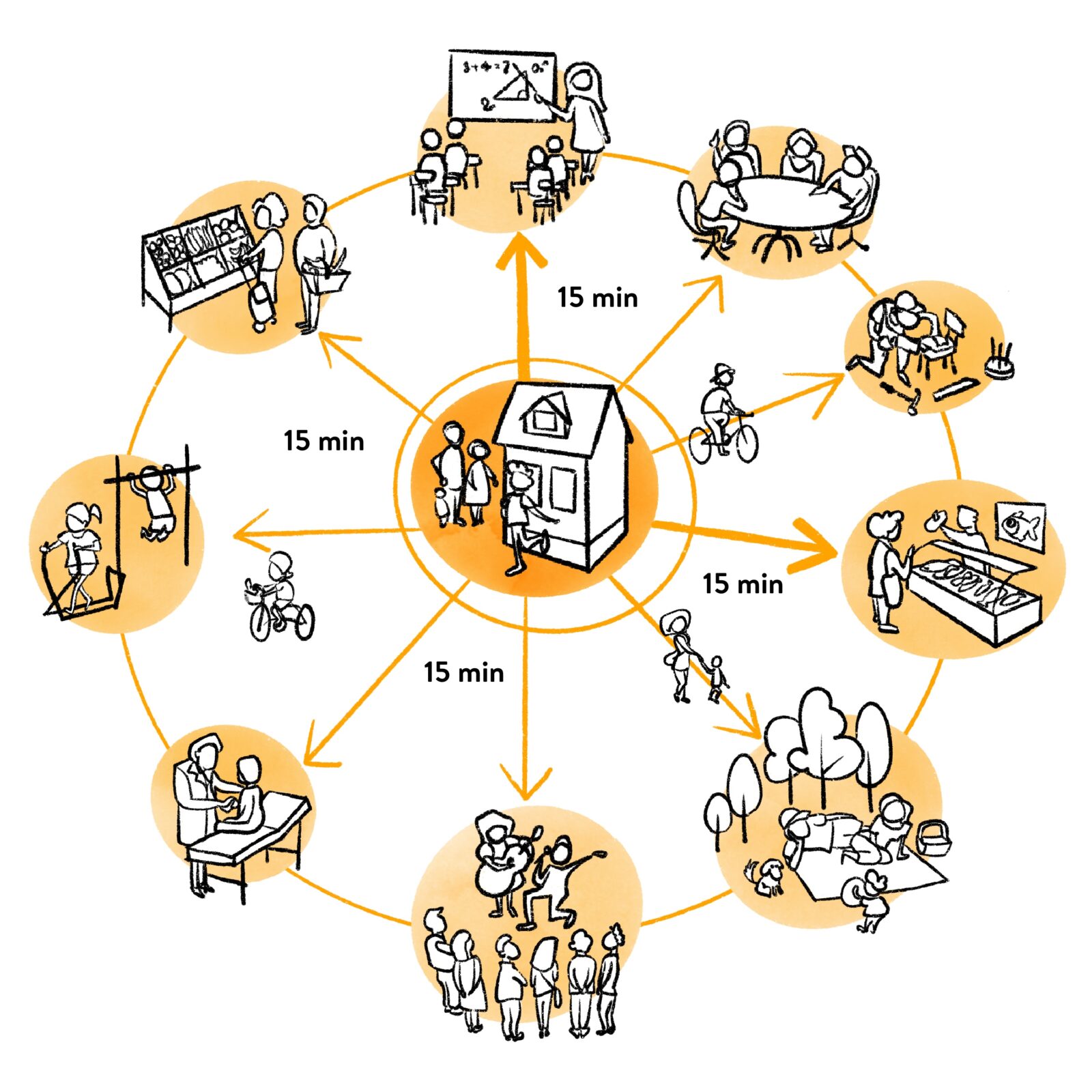
Explanations for the Policy on Settlement Patterns
The settlement pattern of East Iceland
In East Iceland, there are nearly 11,000 inhabitants, of which just over 1,800 live in rural areas. The urban centres are eleven, all located by the sea except for Egilsstaðir. Three have less than 200 inhabitants, five have between 300-700 inhabitants, three have 1,000-1,500 inhabitants, and one has over 2,500 inhabitants.2
The national planning policy emphasizes strengthening communities by directing growth to existing centres and defining main centres in each region. The aim is to make the best use of infrastructure and create employment and service areas that can support a variety of services.3
In East Iceland, it is not considered desirable to emphasize one centre over others since there are many well-established settlement centres in the area, some of which are far apart and difficult to access in winter. Therefore, the focus is on strengthening all centres in one way or another and improving transportation between them. Emphasis will be placed on improving basic services in the local communities4 and working towards the goal that it should take no more than 60 minutes to drive between all urban centres, year-round, which also supports East Iceland as a single labor market area.
The regional plan directs decisions on new residential and service centres or new residential areas outside urban areas to the general zoning plan.
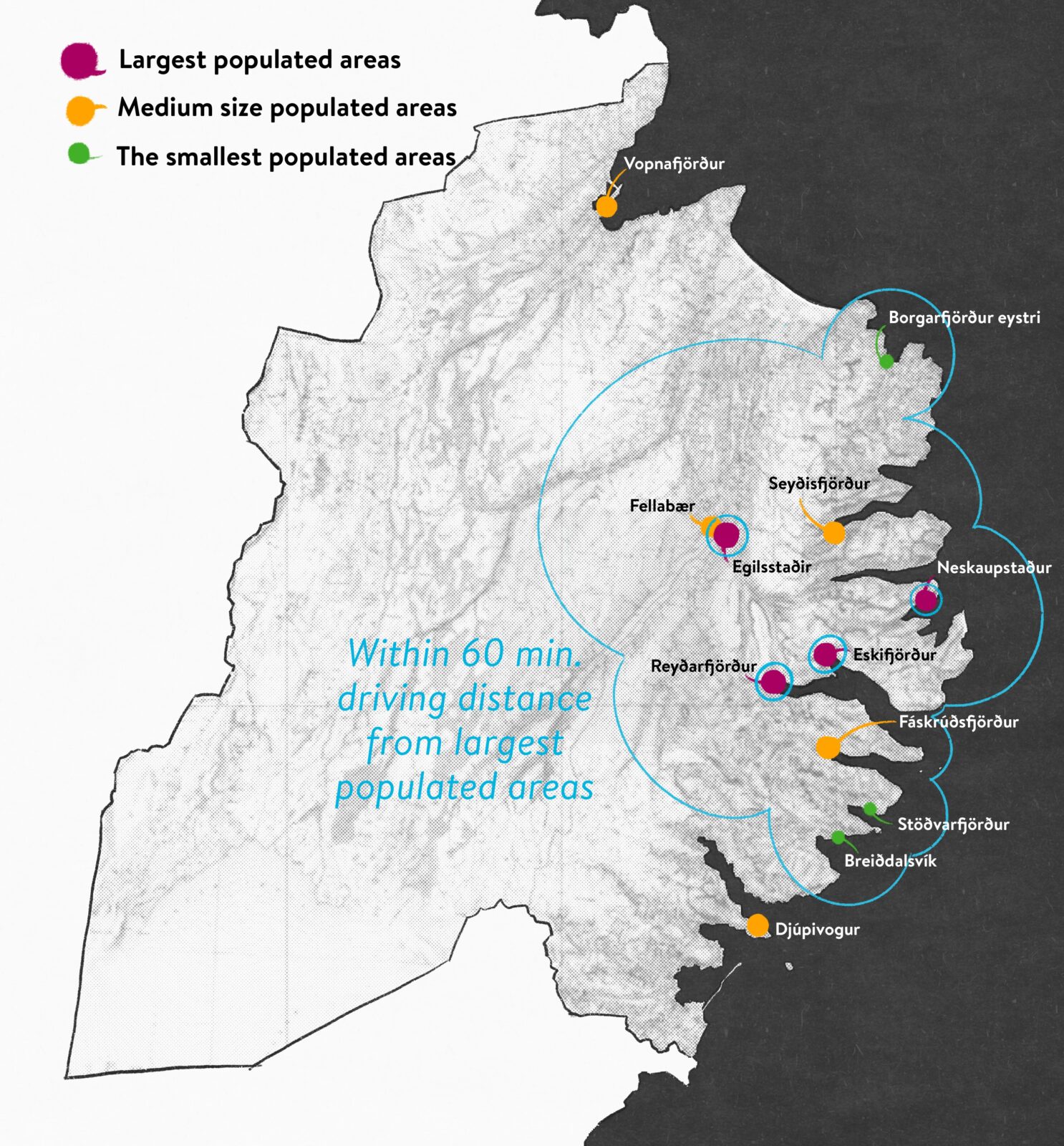
Urban Settlement Patterns
In urban planning, efforts should be made to create a healthy and environmentally friendly environment that ensures residential well-being and has a strong attraction for visitors. The interplay of land use, density, and the street and pathway network plays a key role.
In towns and villages where the street and pathway network is dense and services are within ten or fifteen minutes walking distance for most homes, most errands can be done on foot and/or by bicycle. Most East Icelandic towns already meet these distance criteria and can develop further in this direction. With good pathway connections and careful design of street spaces for all modes of travel, it is possible to facilitate daily exercise and improve public health. Good access to outdoor areas within and near urban areas is also an important factor in a healthy and environmentally friendly urban environment.5
When developing urban areas, it is also important to consider diverse housing options that promote social diversity and allow residents to upsize and downsize their homes as needed at different life stages.6

Á. Policy on Transportation
Á.1 The road network of East Iceland will be strengthened based on four main components:
A circle which is the main connection of roads and tunnels between the largest urban centres in East Iceland and others connected to it. Urban centres connected to the circle are Egilsstaðir/Fellabær, Seyðisfjörður, Neskaupstaður, Eskifjörður, Reyðarfjörður, Fáskrúðsfjörður, Stöðvarfjörður, and Breiðdalsvík.
Spokes that connect other urban centres in East Iceland to the circle with roads or tunnels.
Loops which are important secondary connections primarily serving as travel routes.
Anchors which are road connections into and out of the region.
Á.2 Necessary transportation improvements in the region will be realized with traffic safety and reduced travel times as the main focus.
The development and maintenance of the road network will aim for a maximum travel time of 60 minutes from smaller urban centres to one of the four largest urban centres.
Efforts will be made to improve roads, build tunnels, and widen bridges to shorten routes and increase safety. Main and connecting roads must be passable all year round, making it easy to access services and work between places and travel around the region. Emphasis will be placed on building the Fjarðarheiði, Seyðisfjörður, and Mjóafjörður tunnels with the goal of creating a circle connection in central East Iceland. Efforts will be made to include other necessary tunnel projects in the 15-year transportation plan and subsequently the 5-year action plan.
Efforts will also be made to improve a loop connection between Fljótsdalur and Jökuldalur through the highland part of East Iceland in collaboration with transportation authorities.
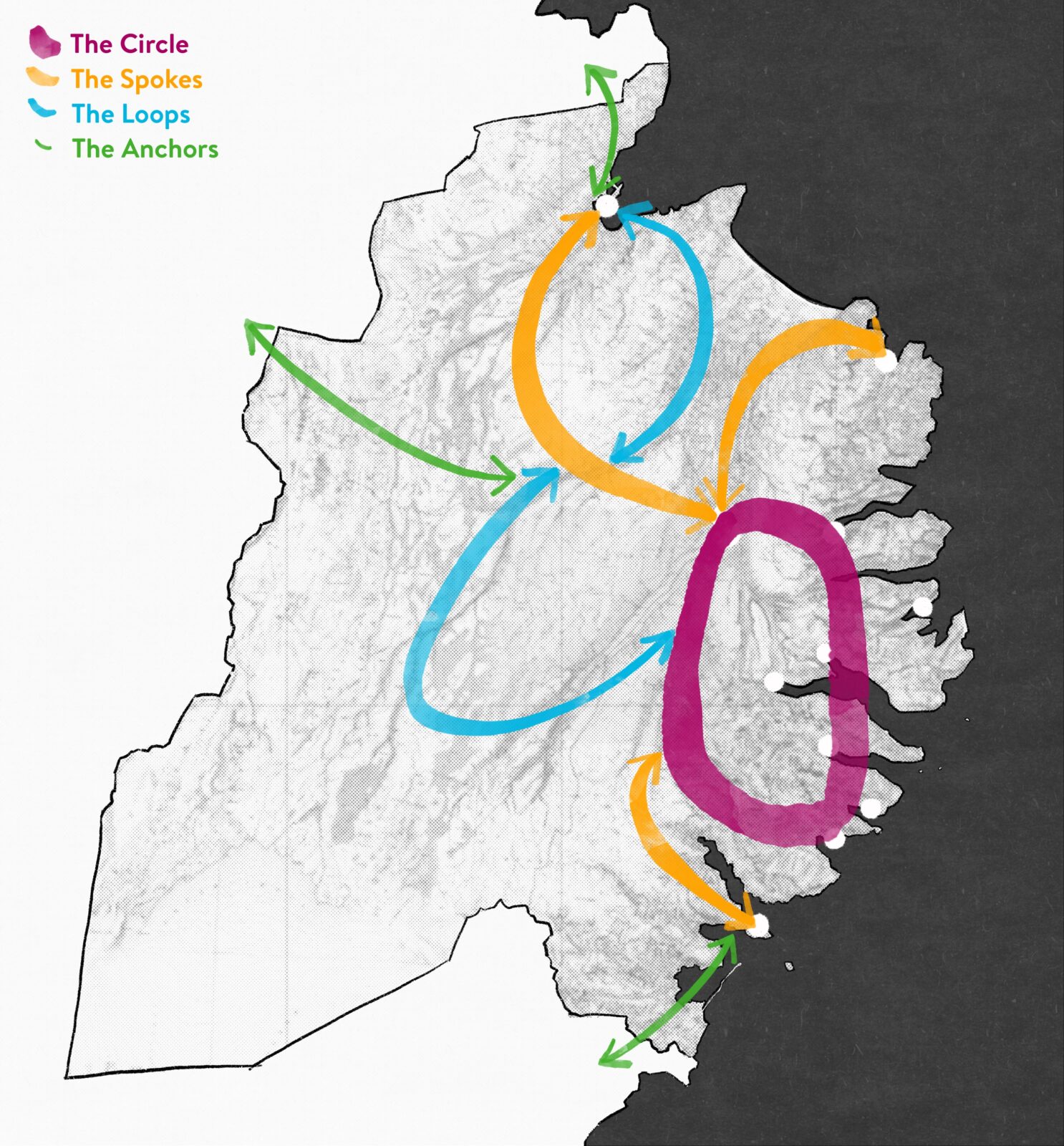
Á.3 Main roads from the region to the north and south will be passable and safe year-round.
Efforts will be made to improve roads to other regions (anchors) so that they serve their purpose as well as possible.
Á.4 Public transportation within the region will be strengthened.
Public transportation will be ensured between all urban centres.
The route network will offer good connections between ferry routes at Seyðisfjörður harbor and flights at Egilsstaðir airport.
The route network will start from smaller places to larger ones.
Efforts will be made to promote passenger shipping between fjords where needed.
Á.5 Scheduled flights to and from the region will be safe and regular year-round, and emergency flight facilities will be optimal.
Egilsstaðir and Vopnafjörður airports will be well-maintained for this purpose, and facilities will be in line with needs.
The runway at Norðfjörður will be well-maintained as a landing site for emergency and medical flights, as well as for private flights of smaller planes.
Other runways and landing sites that serve safety and are useful in tourism will be mapped and their status and role defined.
The “Air Bridge” project will continue to ensure affordable fares to the capital area, and the initiative will be developed further to strengthen settlements.
Á.6 Egilsstaðir airport will be strengthened as an international airport.
Space and facilities at the airport will be based on the needs of international flights for passengers and freight.
Efforts will continue to improve the airport’s competitive positioning and market it for international flights.
Á.7 Seyðisfjörður harbor will be strengthened as Iceland’s main gateway for passenger transport by sea, in addition to its important role as a freight port.
Space and facilities at the harbor will be based on the needs of passenger and freight transport, and the facilities will be well-maintained.
Explanations for the Policy on Transportation
Road Transportation
Municipalities in East Iceland have in recent years called for new tunnels between urban centres to break winter isolation and create a loop in the area connecting the fjords and Egilsstaðir in the Fljótsdalshérað region.7 It is considered important to undertake transportation improvements that ensure a maximum travel time of 60 minutes to the nearest centre. About 90% of East Iceland’s population lives within an hour’s drive from Egilsstaðir, while the remaining 10% are less than 1.5 hours away. Recent tunnels from Reyðarfjörður to Fáskrúðsfjörður and from Eskifjörður to Norðfjörður have significantly shortened travel times.8
In the transportation plan for 2020-2034, construction on the Fjarðarheiði tunnel is set to begin in 2022, followed by the Seyðisfjörður-Mjóafjörður tunnel (Seyðisfjörður tunnel) and the Mjóafjörður-Fannardalur tunnel (Mjóafjörður tunnel).9 These projects will form a ring connection within the region. There have also been proposals for additional tunnels to further connect communities and ensure safe year-round transportation. These include the Vopnafjörður tunnel,10 tunnels under Vatnsskarð11, Breiðdalsheiði, and Berufjarðarskarð.12 Additionally, there has been a suggestion for possible tunnels between Álftafjörður and Lónsfjörður to improve connections between East Iceland and South Iceland. Other requested transportation improvements include an all-year road over Öxi, between Djúpivogur and Skriðdalur, a new bridge over Lagarfljót river, upgrading Route 1 in the southern part of Fáskrúðsfjörður and other areas, paving roads where there are still gravel roads, and widening single-lane bridges. 13
When working on municipal and detailed planning regarding roads, guidelines from the Icelandic Road Administration and the Association of Icelandic Municipalities may be utilized.14 During this work, it is important to plan consultation and take into account the government’s traffic safety plan, which is part of the transportation plan.
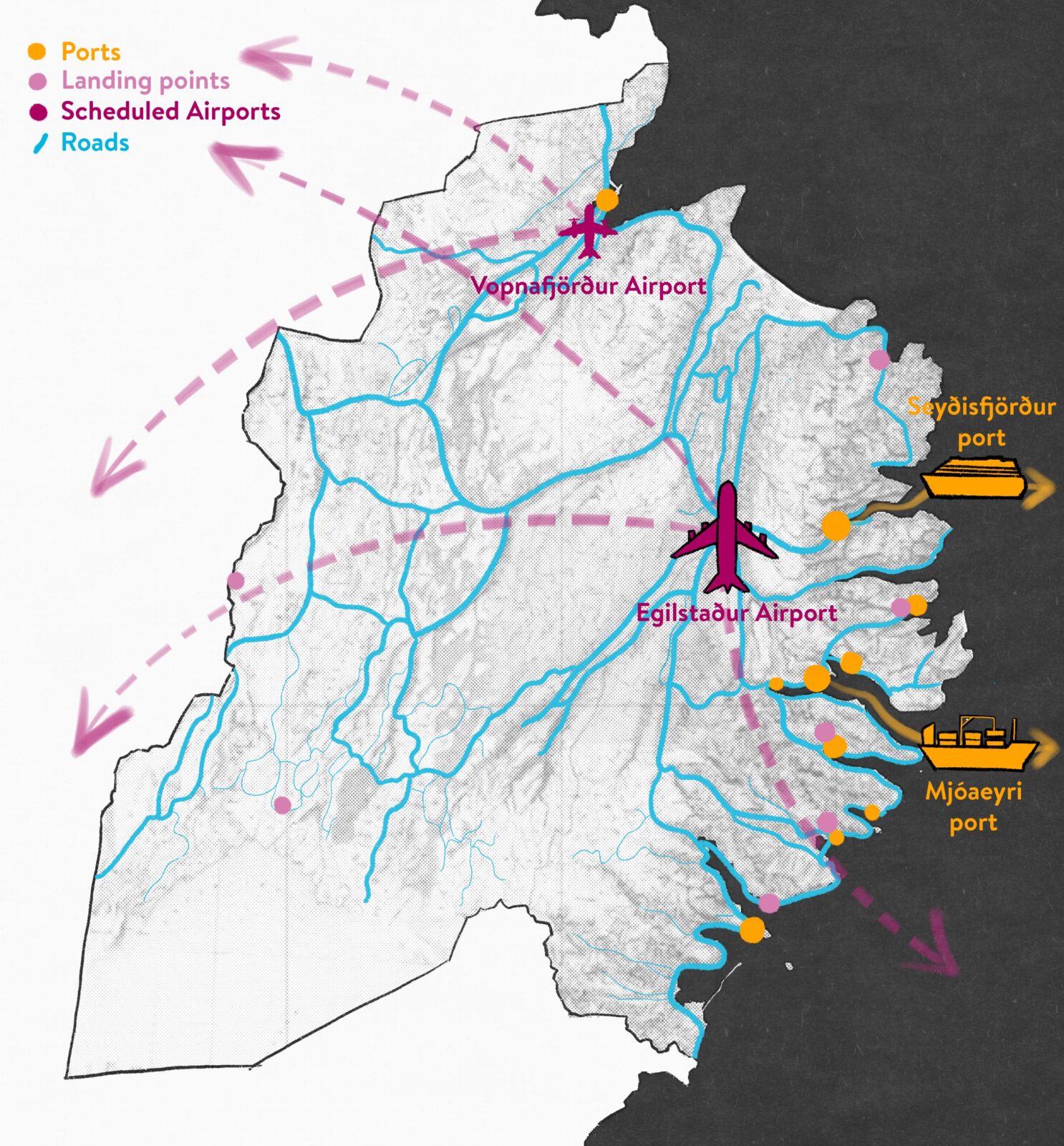
Public Transportation
The national land-use policy emphasizes offering diverse modes of transportation, where public transport plays a key role. Public transport is a cost-effective and environmentally friendly way to travel, essential for those who do not have access to a car and those who cannot or do not want to drive.
In East Iceland, public buses travel between the main urban areas and the airport in Egilsstaðir. Strætó also connects to the north of the country and from Höfn through South Iceland. However, there is a lack of connections to Djúpavogur and Breiðdalsvík, as well as between Vopnafjörður and Egilsstaðir. Additionally, Fjarðabyggð runs a route connecting local communities within the municipality, and Múlaþing operates services between Egilsstaðir and Fellabær.
Regular ferry services for passengers and cargo operate between Mjóafjörður and Neskaupstaður during the winter.15
Residents of East Iceland receive a 40% discount on airfare for up to three trips to and from the capital area each year through the Air Bridge (Loftbrú) project.16
Air Transportation
Air transportation is particularly important for East Iceland, being the region furthest from the capital. The driving time from Egilsstaðir to Reykjavik is roughly the same whether one travels south or north.
There are airports for scheduled flights in Egilsstaðir and Vopnafjörður, and there is also a runway in Norðfjörður used for emergency and medical flights. Egilsstaðir Airport is one of four airports in Iceland that meets the requirements for international flights and is the primary alternate airport for Keflavik Airport. The airport has optimal conditions for approach and landing, and favorable weather conditions.17 There are three scheduled flights daily between Egilsstaðir and Reykjavik year-round, with a flight time of about 45 minutes. The airport also serves charter flights abroad and private flights. It is the stated goal of the Icelandic government to have regular international flights through the airport in the near future. There are also daily scheduled flights between Vopnafjörður and Akureyri on weekdays.18
In recent years, there has been significant work in marketing Egilsstaðir Airport as an international airport.19 International passenger and cargo flights would boost tourism and other commerce and services in East Iceland.20 They could also open opportunities for increased production of fresh goods, such as seafood and aquaculture products. The Association of Municipalities in East Iceland has also emphasized the need to ensure facilities for the Coast Guard helicopter squad at the airport.21
Maritime Transportation
Ports play a key role in the economy of East Iceland, as most of the region’s urban centres developed around fishing. East Iceland has seven ports in the core transport network. Mjóeyrarhöfn in Reyðarfjörður is the second-largest port in the country, handling about 1.5 million tons of cargo annually.22 A major passenger port is in Seyðisfjörður, with weekly sailings of the Norræna ferry with people, goods, and cars to Tórshavn in the Faroe Islands and from there to Hirtshals in Denmark. Seyðisfjörður, along with other fjords in East Iceland, is also a popular destination for cruise ships in the summer.23
Large ports serving primarily fishing vessels are in Vopnafjörður, Neskaupstaður, Eskifjörður, and Fáskrúðsfjörður. Medium-sized fishing ports are in Djúpavogur and Reyðarfjörður, with smaller boat harbors in Stöðvarfjörður, Borgarfjörður, Mjóifjörður, and Breiðdalsvík.24 Aquaculture is also a growing industry in the fjords, leading to increased activity.25 It is important to maintain the ports and ensure they have the capacity to expand due to increased activity and new industries.26
B.Policy on Energy, Telecommunications and Sewage
B.1 Utilize Energy Resources to Strengthen the Settlement in the Region
When deciding on the use of water, geothermal energy, and wind for energy production, sustainability, environmental protection, and landscape quality will be guiding principles, based on analysis of energy options and assessment of the impacts of utilization and energy transmission on the environment, economy, and society.
Efforts will be made to promote good energy efficiency.
B.2 Ensure Reliable Transmission and Distribution Systems for Electricity with High Quality of Energy Delivery
Satisfactory connection of the East Iceland system to the main transmission system of Iceland will be ensured.
Access to three-phase electricity will be guaranteed in all settlements in the region.
B.3 Provide Good Telephone and Internet Connectivity Throughout the Region
Completion of fiber optic cable installation across the entire area will be achieved.
Efforts will be made to ensure mobile phone coverage in populated areas and busy locations, especially along all main roads and other important transport routes.
Efforts will also be made to ensure mobile phone coverage at all major tourist destinations.
B.4 Ensure Sewage Systems Meet Legal and Regulatory Requirements
Efforts will be made to improve sewage systems in both urban and rural areas, including the treatment of sewage water in accordance with Regulation No. 798/1999 on sewage systems and wastewater.
Blue-green stormwater solutions should be applied as widely as possible, contributing to climate action through vegetation, biodiversity, and the creation of a lush and healthy environment.
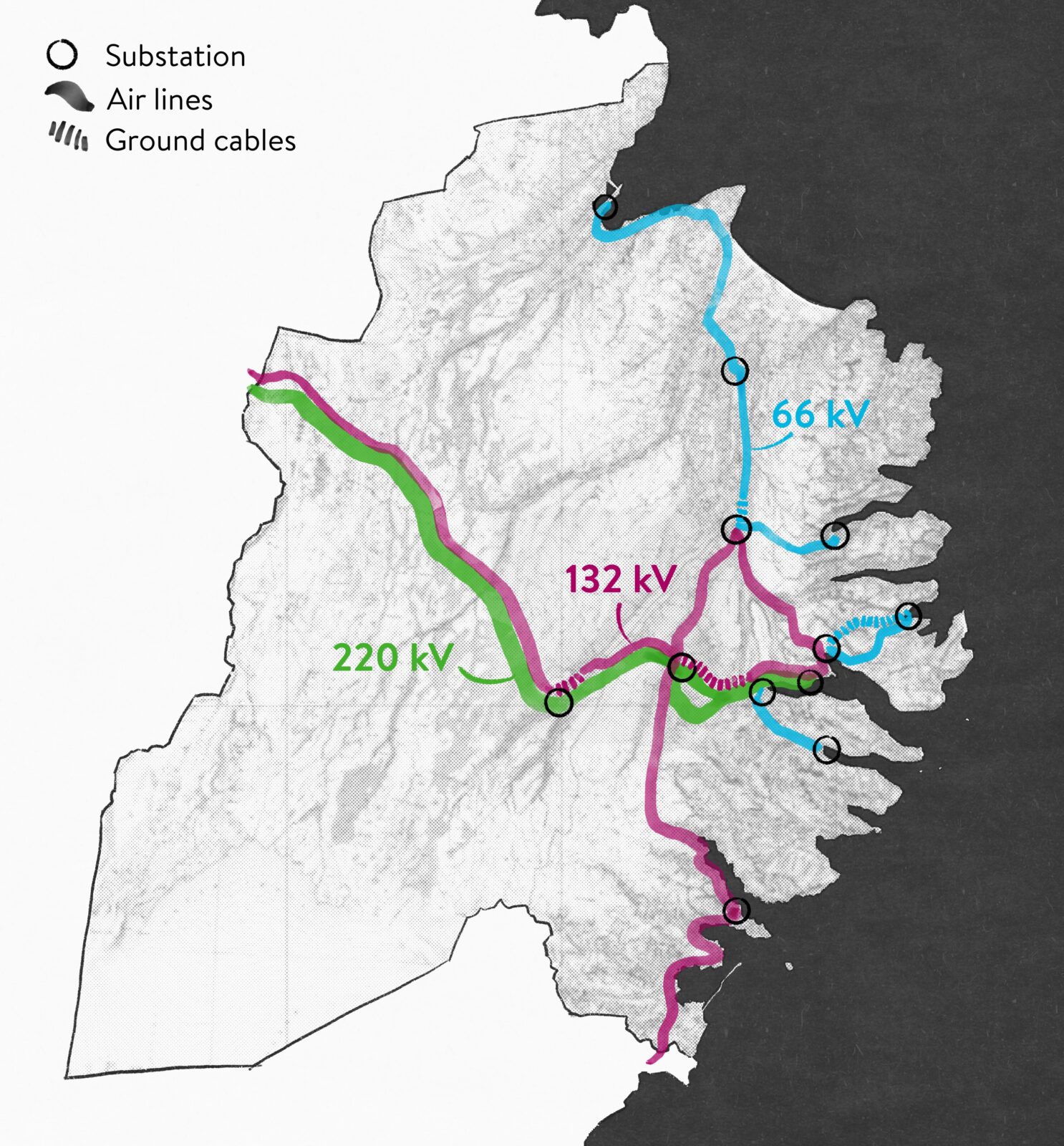
Explanations for the Policy on Energy, Telecommunications and Sewage
Electricity
The largest power plant in the country, with a production capacity of 690 MW, is in Fljótsdalur. Other smaller power plants in East Iceland include Lagarfossvirkjun in Lagarfljót (27.2 MW), Bjólfsand Gúlsvirkjun in Seyðisfjörður (9.8 MW), and Grímsárvirkjun in Skriðdalur (2.8 MW). No energy projects in East Iceland are in the utilization category of the current master plan for the protection and utilization of land areas.27 Two power options in East Iceland are in the waiting category of the third phase of the master plan: Hrauna-power plant to Berufjörður (126 MW) and Hrauna-power plant to Suðurdalur in Fljótsdalur (115 MW).28 In the report of the project management for the fourth phase of the master plan, a 60 MW power plant in the Hrauna-area in Hamarsfjörður, Hamars-power plant, was placed in the waiting category. The fifth phase of the master plan is underway.
In Fljótsdalshérað and Fljótsdalur, conditions for wind power plants are being examined.30 Smaller power plants have also been discussed.31
The distribution of electricity is a basic service that is important for all citizens to have secure access to. The Strategic Regional Plan for 2018-2024 emphasizes that the transmission and distribution system of electricity should meet the needs of industries and the public everywhere in the country.32 The regional transmission system in East Iceland consists of a ring connection between Hryggstekkur, Eyvindará, Eskifjörður, Stuðlar, and Hryggstekkur. Part of this ring, i.e., the lines between Hryggstekkur and Eyvindará on one hand and Hryggstekkur and Stuðlar on the other, is operated at 132 kV while other lines are at 66 kV. From delivery points in the ring, other places in the region are connected radially with 66 kV to the regional transmission system. The transmission system needs to be strengthened as it can hardly handle the current load and an increase is expected at all delivery points in the next decade.33
The Association of Municipalities in East Iceland has called for access to three-phase electricity, in underground lines and stronger than single-phase overhead lines, suggesting joint operations during the installation of fiber optic cables.34
The national land use policy directs municipalities to base decisions on energy production options and power line placement on environmental impact assessments, including visual impacts, and to choose the option that causes the least negative impact. Major construction should be directed to places that do not diminish the wilderness or landscape integrity of the highlands.35 The use of wind energy particularly requires consideration of its impact on the landscape and birdlife.36
Telecommunications
Good telecommunications are crucial for business, quality of life, and security in modern society. The goal of the Icelandic government in telecommunications is to provide 99.9% of residential and business premises with access to fiber optic cables by the end of 2025 through government grants for the development of fiber optics in rural areas outside market areas.37
Work on the fiber optic network in East Iceland has been ongoing in recent years and is well advanced.38 One of the three undersea cables connecting the fiber optic network to Iceland comes ashore at Seyðisfjörður.39
Sewage Systems
Municipalities are responsible for the construction and operation of sewage systems and are required to establish them in urban areas. In rural areas, municipalities must provide sewage systems where the number of houses is about 20 per 10 hectares and/or business activities involve discharges equivalent to about 50 person-units or more per 10 hectares. These obligations do not apply to settlements that existed when Act No. 9/2009 on the construction and operation of sewage systems came into effect. If a municipality does not exercise its authority to establish sewage systems in rural areas, the landowner must ensure that sewage is treated, in accordance with local plans.40
Blue-green or sustainable stormwater solutions are methods for managing stormwater that allow it to infiltrate the ground naturally as close to its point of fall as possible, keeping surfaces as porous as possible. Stormwater that does not immediately infiltrate is directed into a network of green corridors and spaces, where it eventually seeps into the ground. The soil, along with vegetation, also cleanses the stormwater of pollutants, which largely break down over time. The water cycle becomes more visible in the local environment, enriching both the urban environment and the overall ecosystem. When well implemented, blue-green stormwater solutions become urban assets, making urban spaces more beautiful, greener, and more useful.41
